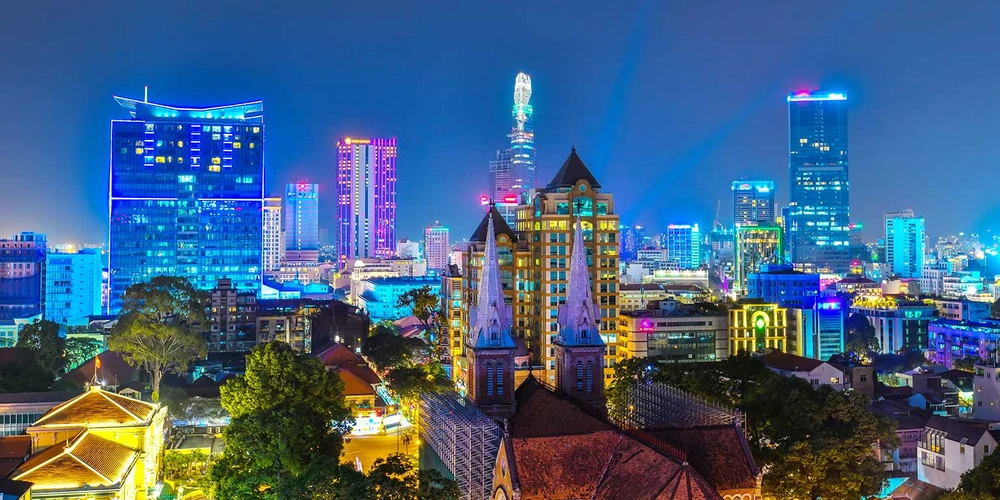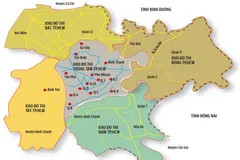
General Secretary Tô Lâm’s remarks reflect a deep-seated concern. Since the 7th National Congress in 1991, "falling further behind economically" has been recognized as one of Vietnam's four major risks. Tô Lâm emphasized that Vietnam must broaden its vision: “We need to look far ahead, see how the world develops, and learn from their methods, rather than merely reflecting on our past.”
His observation that “the reality is worrisome” is borne out by data. According to the World Bank, in 1990, the global GDP per capita was $4,168, while Vietnam's stood at a mere $98—a gap of $4,070. By 2023, the global figure had risen to $13,138, while Vietnam’s reached $4,346, widening the gap to $8,792.
While high growth rates have helped narrow this gap, Vietnam’s progress remains slow compared to its regional peers. Over the past 15 years, Vietnam’s per capita income rose by $1,600, whereas Thailand, Malaysia, and South Korea saw increases of $3,600, $6,500, and $16,000, respectively. Similarly, Vietnam's GDP expanded by $160 billion, while Thailand, Malaysia, Indonesia, and South Korea experienced growth of $270 billion, $200 billion, $700 billion, and $850 billion, respectively.
This disparity highlights the small size of Vietnam’s absolute GDP despite its relatively high growth rates. Moreover, Vietnam’s economic growth is showing signs of slowing, with an average annual growth rate of 5.2% over the past three years. To meet its target of 7% growth, the economy would need to expand by nearly 9% annually in 2024 and 2025—an unrealistic goal given the current conditions.
Vietnam faces the growing risk of falling into the middle-income trap, especially as the World Bank continuously raises the income benchmarks for this classification. By 2024, a country must achieve a Gross National Income (GNI) per capita of $4,466 to $13,845 to be classified as upper middle-income and over $14,000 to be considered high-income. In 2023, Vietnam’s GNI per capita stood at $4,180, still far from the upper middle-income threshold.
These figures underscore the urgency of structural reforms to ensure sustainable growth. Without such changes, Vietnam risks stagnating and falling further behind its peers.
At the 2017 Economic Forum, Professor Kenichi Ohno, an expert on Vietnam’s economy, observed: “Over the past 20 years, Vietnam’s economic structure has changed, but not significantly.” While 65% of Vietnam’s exports consist of processed and manufactured goods, most of these come from foreign direct investment (FDI) enterprises. Meanwhile, domestic businesses primarily export low-value products like textiles and footwear.
This reliance on FDI means that a large part of Vietnam’s economic growth stems from external sources rather than its internal capabilities. Although Vietnam has traditionally relied on its abundant and low-cost labor, this advantage is diminishing as the country approaches the end of its demographic dividend. Within the next decade, competition from countries with lower production costs will intensify.
Vietnam has reached a critical juncture. To transition from a middle-income to a high-income economy, the country must adopt breakthrough policies that enhance its internal strengths. According to the Organization for Economic Cooperation and Development (OECD), only 13 out of 113 middle-income countries in 1960 had successfully transitioned to high-income status by 2017. These include Japan, South Korea, Singapore, and Taiwan.
Professor Ohno outlined several indicators that suggest Vietnam may be stuck in the middle-income trap:
· Slowing growth: Economic expansion is stabilizing at moderate levels.
· Skills deficit: A lack of highly skilled engineers, innovators, and scientists hampers innovation.
· Low productivity: Labor productivity and Total Factor Productivity (TFP) remain average.
· Dependence on FDI: Heavy reliance on foreign capital limits Vietnam’s ability to generate value independently.
· Limited participation in global value chains: Domestic firms play a marginal role in international markets.
These challenges highlight the need for a comprehensive strategy to foster sustainable growth.
Vietnam’s ambition to achieve high-income status by 2045 hinges on several critical factors. First, the country needs dynamic and economically savvy leaders who can design and implement forward-thinking policies. These leaders must take a hands-on approach, ensuring that reforms are effectively executed.
Second, Vietnam requires a cadre of competent, dedicated, and ethical technocrats to oversee policy implementation. These experts will play a crucial role in driving innovation, enhancing productivity, and fostering a business environment that supports domestic enterprises.
To break free from the middle-income trap, Vietnam must focus on the following areas:
1. Human capital development: Investing in education and vocational training to build a skilled workforce capable of driving innovation and economic growth.
2. Support for domestic industries: Strengthening local businesses to increase their contributions to GDP and reduce dependence on FDI.
3. Productivity enhancement: Adopting advanced technologies and improving production processes to boost efficiency.
4. Integration into global value chains: Expanding the presence of Vietnamese firms in international markets by focusing on higher-value goods and services.
Vietnam’s journey to high-income status is fraught with challenges, but it is not insurmountable. By adopting a long-term vision and implementing bold reforms, the country can unlock its potential and secure a prosperous future for its people.
The stakes are high, but with decisive leadership and a commitment to sustainable development, Vietnam can overcome the middle-income trap and join the ranks of high-income nations by 2045. The time to act is now.




















